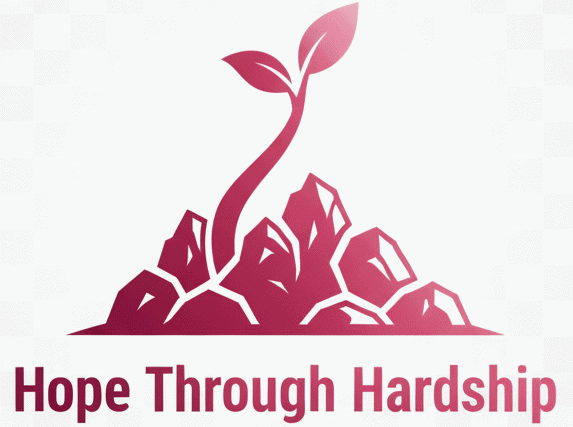
That queasy feeling in your stomach? Moreover, it’s not fear trying to hold you back—it’s growth calling your name. Furthermore, every successful person you admire once stood exactly where you’re standing now, trembling at the edge of their familiar world. Additionally, they made a choice that changed everything: they stepped forward anyway.
However, staying comfortable feels so much easier than venturing into unknown territory. Nevertheless, comfort zones aren’t comfortable—they’re prisons disguised as safety nets. Therefore, understanding why all growth starts at the end of your comfort zone becomes your first step toward extraordinary transformation. Similarly, this isn’t just motivational fluff; it’s a scientifically proven pathway to unlocking your full potential.
The Science Behind Comfort Zone Psychology
Your brain operates like an overprotective parent who never wants you to get hurt. Furthermore, it’s wired to keep you alive, not help you thrive. Additionally, neuroscientists have discovered that your comfort zone exists in the brain’s limbic system, specifically the amygdala—your fear center.
Consequently, when you encounter unfamiliar situations, your brain triggers fight-or-flight responses. However, here’s the fascinating part: your neural pathways strengthen when you push through discomfort. Moreover, research from Yale University shows that stepping outside comfort zones rewires your brain for resilience. Therefore, what feels terrifying today becomes tomorrow’s new normal through neuroplasticity.
Scientists call this phenomenon “optimal anxiety”—the sweet spot where performance peaks. Similarly, psychologist Alasdair White’s research proves that moderate stress enhances learning and adaptation. Consequently, your discomfort isn’t a warning sign; it’s your brain’s upgrade notification.
Why Comfort Zones Are Danger Zones
Comfort zones aren’t neutral spaces—they’re regression chambers in disguise. Furthermore, when you’re not growing, you’re dying. Additionally, staying stagnant while the world evolves around you creates a dangerous illusion of security.
Consider this sobering reality: companies that refused to innovate beyond their comfort zones became extinct. Similarly, Kodak invented digital photography but feared cannibalizing its film business. Moreover, Blockbuster dismissed Netflix as a niche player. However, these giants fell because they prioritized comfort over growth beyond their comfort zone.
Your personal life follows identical patterns. Nevertheless, relationships stagnate when partners avoid difficult conversations. Additionally, careers plateau when professionals refuse challenging assignments. Therefore, your comfort zone isn’t protecting you—it’s slowly suffocating your potential while you sleep peacefully in mediocrity.
The 5 Stages of Comfort Zone Breakthrough
Breaking free from limitations isn’t a single leap—it’s a predictable journey with distinct phases. Furthermore, understanding these stages helps you navigate the process without losing motivation when things get tough.
Stage 1: Denial and Resistance – You make excuses for why change isn’t necessary. However, deep down, you know you’re settling for less than you deserve. Stage 2: Anger and Frustration – You become irritated with your current situation, but still resist action. Moreover, this internal conflict creates emotional turbulence. Stage 3: Bargaining and Negotiation – You look for comfortable ways to grow without real discomfort. Nevertheless, growth doesn’t negotiate.
Stage 4: Depression and Acceptance – You realize that comfortable growth is impossible. Additionally, you accept that growth requires discomfort if you want real change. Stage 5: Action and Transformation – You finally step forward despite fear. Consequently, everything changes as you discover your true capabilities.
The Fear-Growth Connection That Changes Everything
Fear and growth aren’t opposites—they’re dance partners. Furthermore, whenever you feel scared about pursuing something, that’s your internal GPS pointing toward your next level. Additionally, successful people don’t eliminate fear; they reframe it as excitement.
Consider fear as your growth detector. Moreover, when you feel terrified about public speaking, starting a business, or ending a toxic relationship, that’s your soul highlighting areas needing expansion. However, most people interpret fear as a stop sign rather than a green light. Therefore, learning to move toward fear instead of away from it becomes your superpower.
Research from Harvard Business School shows that saying “I’m excited” instead of “I’m nervous” before challenging situations dramatically improves performance. Similarly, reframing anxiety as anticipation changes your physiology and outcomes. Consequently, stepping outside comfort zones becomes easier when you understand fear’s true purpose.
Practical Strategies for Comfort Zone Expansion
Theoretical knowledge means nothing without practical application. Furthermore, these proven strategies help you gradually expand your boundaries without overwhelming yourself. Additionally, small, consistent steps create massive transformations over time.
The 1% Rule: Push your boundaries just 1% each day. Moreover, if networking terrifies you, start by making eye contact with strangers. Similarly, if public speaking scares you, begin by speaking up in small meetings. However, consistency trumps intensity every time. Therefore, daily micro-challenges compound into breakthroughs.
The Comfort Zone Map: Draw three concentric circles representing your comfort zone, stretch zone, and panic zone. Furthermore, identify specific activities in each area. Additionally, focus on stretch zone activities that challenge you without triggering panic. Moreover, gradually move stretch zone activities into your comfort zone through repetition.
The 20-Second Rule: When facing a growth opportunity, count down from 20 and take action before reaching zero. Similarly, this technique bypasses your brain’s overthinking patterns. However, don’t use this for dangerous situations—only growth-related challenges. Therefore, you act on courage before fear hijacks your decision-making.
Building Your Discomfort Tolerance Muscle
Comfort zone expansion is like physical fitness—it requires progressive training. Furthermore, you can’t run a marathon without building endurance first. Additionally, your discomfort tolerance grows stronger with consistent practice.
Start with low-stakes challenges that stretch you slightly. Moreover, take cold showers, try new cuisines, or wear different clothing styles. Similarly, these small discomforts build confidence for bigger challenges. However, don’t mistake drama for growth—choose challenges that genuinely develop you.
Practice the “Discomfort Menu” technique: create a list of increasingly challenging activities. Furthermore, tackle one weekly while celebrating your courage. Additionally, track your progress to see how yesterday’s terror becomes today’s normal. Therefore, you develop evidence that growth beyond the comfort zone is not only possible but inevitable.
The Ripple Effect of Comfort Zone Courage
Your courage doesn’t exist in isolation—it inspires everyone around you. Furthermore, when you step beyond your limitations, you permit others to do the same. Additionally, your growth creates a positive contagion that transforms entire communities.
Consider how your children, colleagues, and friends observe your choices. Moreover, they’re watching to see if transformation is possible or if settling is acceptable. Similarly, when you choose growth over comfort, you become a living example of human potential. However, this responsibility shouldn’t pressure you—it should empower you.
Your breakthrough moments often become other people’s possibility moments. Nevertheless, you can’t give what you don’t have. Therefore, your personal growth requires discomfort not just for yourself, but for everyone whose life you touch.
Common Comfort Zone Myths That Keep You Stuck
Several dangerous myths prevent people from embracing growth opportunities. Furthermore, recognizing these false beliefs helps you overcome mental barriers that seem insurmountable.
Myth 1: “I need to feel ready before I act.” However, readiness is a feeling that comes after action, not before it. Myth 2: “Successful people aren’t afraid.” Moreover, successful people feel fear but act anyway. Myth 3: “I might fail and embarrass myself.” Similarly, staying stuck is a guaranteed failure while attempting growth offers unlimited possibilities.
Myth 4: “I’m too old/young/inexperienced to change.” Nevertheless, transformation knows no age limits or experience requirements. Myth 5: “Other people are naturally braver than I.” Additionally, courage is a skill you develop through practice, not a genetic trait. Therefore, stop believing these limiting stories that keep you imprisoned in mediocrity.
Your 30-Day Comfort Zone Challenge
Ready to prove that all growth starts at the end of your comfort zone? Furthermore, this structured challenge eliminates excuses while maximizing results. Additionally, tracking your progress keeps you motivated throughout the journey.
Week 1: Social comfort zone expansion. Moreover, start conversations with strangers, attend networking events, or join new groups. Week 2: Professional growth challenges. Similarly, volunteer for difficult projects, ask for feedback, or propose innovative ideas. Week 3: Personal development focus. However, try new hobbies, travel somewhere unfamiliar, or take a class outside your expertise.
Week 4: Integration and planning. Therefore, reflect on your growth, celebrate victories, and design your next expansion phase. Additionally, notice how your confidence has grown and your comfort zone has expanded. Consequently, you’ll have concrete evidence that growth truly begins where comfort ends.
Creating Your Growth-Oriented Lifestyle
Comfort zone expansion isn’t a one-time event—it’s a lifestyle choice. Furthermore, successful people make discomfort their friend rather than their enemy. Additionally, they understand that stepping outside comfort zones becomes easier with practice.
Design your environment to support growth over comfort. Moreover, surround yourself with people who challenge you to become better. Similarly, consume content that inspires action rather than passive consumption. However, balance is crucial—you need recovery time between growth spurts.
Create accountability systems that make comfort zone expansion inevitable. Nevertheless, find growth partners who share your commitment to continuous improvement. Therefore, your journey becomes sustainable when you build systems that support transformation rather than relying on willpower alone.
Your comfort zone will expand or contract based on your daily choices. Furthermore, every day you choose growth over comfort, you become a stronger, more capable version of yourself. Additionally, the compound effect of these choices creates extraordinary results over time.
Remember: all growth starts at the end of your comfort zone. However, the end of your comfort zone is just the beginning of your extraordinary life. Therefore, step forward today—your future self is already thanking you for your courage.

